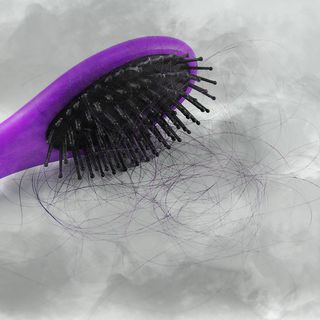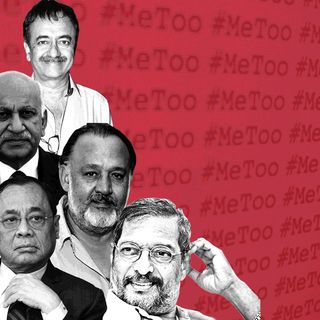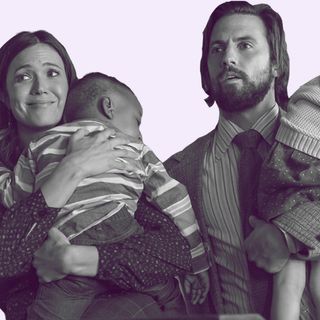
Miley Cyrus Has a Pattern of Portraying Black American, Queer Cultures as Deviant
Cyrus was recently in the news for saying she thought she had to be gay because all men were evil.

Miley Cyrus has often experienced excessive negative media scrutiny — whether it be a topless photoshoot at age 15, a performance of “Blurred Lines” at the 2013 MTV Music Awards when she gyrated on Robin Thicke, her pot habits, or her turbulent love life. Most recently, she courted controversy by doing an Instagram Live video on Sunday with her current partner, Cody Simpson, and saying “I just always thought I had to be gay because all guys were evil but it’s not true…You don’t have to be gay, there are good people with dicks out there, you’ve just got to find them.”
This statement received immense backlash, shattering a significant amount of goodwill the singer had built with the queer community. However, this isn’t Cyrus’ first time letting down a community — in fact, it is almost a pattern that is evident throughout her time as a public figure. Cyrus’s career evolved from beloved child star of Disney’s Hannah Montana (2006) to a young woman owning her sexuality in her song “Can’t Be Tamed” (2010). Then, during her Bangerz (2013) era, she took to twerking, participating in stoner culture and hanging out with hip hop artists in order to hammer in the fact that she wasn’t a young girl anymore. Cyrus also came out as pansexual in 2016, allying herself with the LGBTQIA+ community. After this, she quite randomly returned to her wholesome, pure country girl roots during the release of her single “Malibu” (2017) right before marrying her then on-and-off partner Liam Hemsworth in 2018.
Twerking, smoking pot, and having girlfriends are extremely normal habits, but Cyrus flitting between them and a more conventionally ‘wholesome’ image is harmful as it showcases black and queer cultures as rebellion phases. This feeds into age-old stereotypes of people adopting certain aspects of marginalized cultures in order to be seen as ‘cool’ or ‘bad,’ pegging certain cultures as deviances rather than just normal. Cyrus’ own identity as a white woman allows her to adopt ‘deviance’ in order to seem cool, but she can take off that costume whenever she chooses with no repercussions beyond bad press — all while ignoring the fact that black and queer communities continue to face systemic inequality and violence due to being seen as the same type of ‘deviant.’
The current controversy reflects the same — post-break-up in 2019, Cyrus was reportedly in a relationship with a woman for a few months. However, after she found Simpson, a male partner, Cyrus decided to insinuate that being gay was a choice on her Instagram Live, making everyone wonder if her LGBTQ+ advocacy was all a sham.
Related on The Swaddle:
Controversial Crush: Jameela Jamil and Her Brand of Body Positivity
Miley also said, “I was just being hardcore feminist vibes and not allowing anyone in, but now I am,” insinuating that feminist women are frigid, which is a sign of internalized misogyny. Though Cyrus seems to champion feminist and queer causes, her recent statements can either be interpreted as her having a lot to learn about her identity as a feminist and a queer woman or her merely performing solidarity for goodwill.
Cyrus is 100% pansexual because she says she is, and that should be enough. But from her current statements regarding queerness, it almost feels like Cyrus used and discarded queer culture in order to make a point about her disdain for Liam Hemsworth, her ex-husband. After immense backlash for these statements, Cyrus responded via the tried-and-tested iPhone Notes app apology screenshot on Twitter, stating “I was talking shit about sucky guys but let me be clear, YOU don’t CHOOSE your sexuality. You are born as you are. It has always been my priority to protect the LGBTQ community I am a part of…”
Similar critiques of her using and discarding black culture appeared after she completely changed her Bangerz wild-child image to that of a pure, white country girl around the release of her single “Malibu.”Cyrus then drew further criticism for stating that rap music was too misogynistic for her tastes. Despite dabbling in hip-hop subculture very publicly, Cyrus did a complete U-turn in a Billboard interview and said, “That’s what pushed me out of the hip-hop scene a little…It was too much ‘Lamborghini, got my Rolex, got a girl on my cock’ ― I am so not that.”
In her Huffington Post piece titled “Miley Cyrus Discarding Hip-Hop Is The Least Surprising Thing Ever,” writer Zeba Blay writes, “Blackness has always been a shortcut to cool, and a shortcut to success for white artists like Miley. But what’s incredibly telling is how, once she achieved that success, it seemed like the plan was always to discard hip-hop music and black culture like the costume that it was. Cyrus, even with the tattoos and the two-tone hair, will always be able to fall back on whiteness, on the ‘pure white womanhood’ that allows her to slip into this new country-folk era in a way few black female artists ever could. It’s not totally Cyrus’s fault, of course ― it’s emblematic of a larger flaw in an industry and society that prizes blackness most when it comes in the form of non-black people.”
Related on The Swaddle:
The Feminist Evolution of Ariana Grande Is Immensely Satisfying to Watch
“Cyrus’s arc — she was a fairly innocent kid who enjoyed a wild period in her early 20s, and, now that she’s about to become someone’s wife, she’s settling down, finding a new way to be (or act) virtuous — is culturally ingrained. Everyone seems to agree that this is an acceptable path forward. And that’s what’s so troubling about it. It’s not so much that Cyrus has changed (or that she has, at least, changed tack strategically; both are so ordinary as to be banal), it’s that this is what everybody thinks a grownup woman looks like: pretty, tamed, straight, still, white,” wrote Amanda Petrusich in the New Yorker, after Cyrus released “Malibu”.
Regardless of Cyrus’ intent, she does extensively profit from her statements and behaviors that rely on black and queer culture, — both monetarily and by drawing fans from a large pool of different identities. It’s about time she acknowledged her privilege in her engagement with different cultures enough not to wear and discard them like costumes.
Aditi Murti is a culture writer at The Swaddle. Previously, she worked as a freelance journalist focused on gender and cities. Find her on social media @aditimurti.
Related


#MeToo One Year Later: Where Are All The Accused Men?
